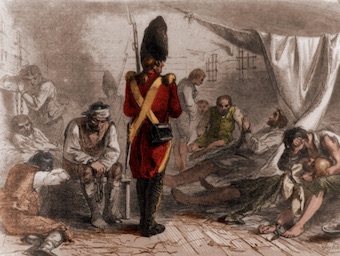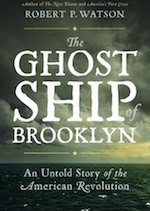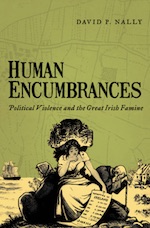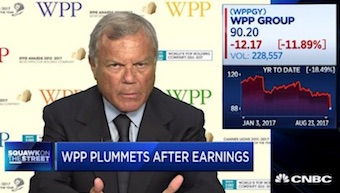Some 11,500 Americans died in 13 “hellish” U.K. prisoner ships docked off Brooklyn during the Revolutionary War, recalled the New York Post Aug. 25.
Twice as many died on one ship, the Jersey, then died in combat during the entire War from 1775-83.
“It was the closest thing to hell any living man would ever know,” wrote David McKendry for blumhouse.com. “The Jersey was floating tomb… that became a symbol of the depths of man’s cruelty.”
 |
“During the day, the sun would heat below decks to unbearable temperatures. Prisoners would strip naked in an attempt to cool down. They gasped for air in the dark because there was not enough oxygen to keep their lanterns lit.
“Those who were too sick to fend off the rats were eaten alive, men cursed and screamed as the vermin consumed them. The screams of men sick, dying, and driven to madness was a constant. Those who didn’t succumb to dehydration and starvation died from diseases such as small pox, typhus, and dysentery.
“Every morning, the ‘death patrol’ would seek out the dead so that they could be thrown overboard. Such was the disturbing appearance of their fellow inmates, their skin so covered in feces and filth that the patrol would have to ask people if they were dead or alive.”
Irish Potato Famine Recalled
The cruel slaughter of so many by Brits brought to mind the Irish Potato Famine of 1845-49 that took one million Irish lives and caused millions to flee the country, reducing the population of nine million to 6.1M.
 |
David Nally, Ph.D., of Cambridge University, has authored Human Encumbrances: Political Violence and the Great Irish Famine, which he calls “one of the worst in recorded history.”
There’s lots of debate about the famine caused by failure of the potato crop, he admits. But The U.K. government’s failure to take action, born out of an indifference to the suffering of the Irish poor, amounted to an avoidable policy of “letting die,” he says.
 |
Nally is a lecturer in the Geography Dept. and a Fellow and Director of Studies at Fitzwilliam College of the University. He has a B.A. in History and Geography from University College Cork, Ireland, and a Ph.D. in Geography at the University of British Columbia, Canada.
Nally argues that land confiscations and plantation schemes paved the way for the reordering of Irish political, social, and economic space. The policies undermined rural livelihoods and made Irish society more vulnerable to catastrophic food crises. He says colonial ideologies generated negative evaluations of Irish destitution and attenuated calls to implement traditional anti-famine programs.
Cut to Present: Brits Invade on Borrowed $$
In compiling our Modern History of PR, which covers the half century that we have been reporting on it, we can’t help but notice the leading role that the U.K.’s Martin Sorrell has played in the destruction of much of the traditional open, responsive U.S. PR culture, a unique U.S. creation. Dozens of major agencies have either been destroyed or, in effect, imprisoned.
Sorrell’s pay of $62 million in 2016 was more than twice the pay of the next highest U.K. exec, and far below the $90.8M, he received the previous year.
A close second in pursuing these destructive policies is Omnicom's, John Wren. Same record of destroyed and silenced PR firms.
OMC’s DDB unit has been the lead creative agency for Budweiser in the U.S. since the mid-1990’s while WPP’s Mediacom unit handles media buying. Both are under fire for their roles in twice substituting “America” for Budweiser on hundreds of millions of beer bottles and cans.
U.K.’s Gummer Was an Aggregator
Borrowed funds bankrolled the takeover of many PR firms. Merger specialists comb the lists of independent PR firms, offering jaw-dropping amounts of cash, stock and/or extended payouts to owners. Support staffs, CPAs and other suppliers, offices, etc., are quickly offloaded.
A leading practitioner of this art in the 1980s was the U.K.’s Peter Gummer, who acquired 35 firms for an initial $90M with further possible payouts of $180M. Much of that was never paid. The firms, almost all of which disappeared, had $100M in fees and 1,700 staff. They were to keep their names, management and cultures, a promise that mostly was not kept. Gummer sold Shandwick to IPG in 1998 for $170M, a deal that included $70M in acquisition-related debt.
Gummer had 9.5M shares of Shandwick worth $10.8M at the time of the sale.
Current debt of the five conglomerates is $19.15 billion. WPP owes $8.54B; OMC, $4.98B; Publicis, $3.81B; IPG, $1.82B, and Havas, $777.4B.
WPP, Omnicom, IPG and other companies purchased 16 of the 25 biggest PR firms on the 1980 ranking in O’Dwyer’s Directory of PR Firms.
Six were in the “Top Ten”—H&K, B-M and Byoir, the three biggest; Manning, Selvage & Lee, Doremus & Co., The Rowland Co. and Ketchum, MacLeod & Grove.
Harshe-Rotman & Druck, sixth biggest, was acquired by Ruder & Finn, fourth biggest, in 1981.
NYT Ad Column Killed
A casualty of the onslaught is the New York Times ad column, a feature for 81 years until the retirement of Stuart Elliott at the end of 2014. Not only did ad support of the column dip, but also cooperation with the column. Public companies like WPP and OMC are hyper about anything written about them.
 |
Their target audience is security analysts, whose employers are also trying to sell the stock with some of them also doing underwriting business for WPP and OMC. The latter is followed by 16 analysts, who mostly advise “buy” or “hold.”
Oddly, the same finance.yahoo listing for WPP is almost bare, laden with 0’s and “N/A.” No analysts are advising “sell” WPP.
WPP, which reached $120.34 on Sept. 9, 2016, is now around $90. OMC, $88.47 on Nov. 25, 2016, is around $73.
JWT “Bloodiest Takeover”
Armand Mattelart, author of Advertising International: The Privatization of Public Space, said the WPP’s hostile absorption of J. Walter Thompson in 1987 was “the most bloody takeover in the history of advertising.” WPP, in buying Young & Rubicam in 2000, also added Burson-Marsteller, one of the three biggest PR firms. It had been purchased by Y&R in 1979.
Mattelart called CEO Martin Sorrell “the king of mortgage finance.”
Current debt/equity percentage of WPP is 67.24. Above “one” is considered desirable. Chase Bank’s ratio is 2.42 while Johnson & Johnson’s is 1.34.
The advertising industry soon clamped down on many of the informational practices of the PR firms.
Disappearing was the client list of more than 400 that H&K posted in O’Dwyer’s Directory. The Byoir client list had vanished upon its purchase by H&K. Byoir itself vanished a few years later. Also a casualty was the 16 NYC PR/press lunch groups that stopped meeting.
Don't Buy, Don't Tell
Congloms and others pursued a policy of “Don’t Buy, Don’t Tell” with the PR trade press, meaning don’t spend money on it and tell it as little as possible. As a result, nine PR media ceased publication—three by Ragan, two of Paul Holmes including a monthly magazine (The Holmes Report continues as an online NL), plus PR Reporter NL, PR Quarterly, Bulldog Reporter (sold and now online), and PR Newser.
Sorrell on Aug. 25 took a slap at competitors who burnish their “image in trade magazines” by winning new accounts “at any cost.”


 DJE Holdings, parent of Edelman and Zeno, launches RUTH as an independent shop named after Ruth Edelman, mental health advocate, wife and longtime business partner of Dan Edelman.
DJE Holdings, parent of Edelman and Zeno, launches RUTH as an independent shop named after Ruth Edelman, mental health advocate, wife and longtime business partner of Dan Edelman. New York City PR firms make up the largest slice of O'Dwyer's 147 firm overall ranking with 33 of 40 in the New York/New Jersey area either calling Manhattan their home or having a presence there.
New York City PR firms make up the largest slice of O'Dwyer's 147 firm overall ranking with 33 of 40 in the New York/New Jersey area either calling Manhattan their home or having a presence there. Subject Matter+Kivvit, which joined forces in May, has rebranded as Avoq, an integrated shop with more than 200 professionals in Washington, New York, Asbury Park (NJ), Miami and Chicago.
Subject Matter+Kivvit, which joined forces in May, has rebranded as Avoq, an integrated shop with more than 200 professionals in Washington, New York, Asbury Park (NJ), Miami and Chicago. While PR pros stationed at in-house comms. teams and those working for agencies share many of the same objectives, they also have markedly different top priorities, according to a recent report.
While PR pros stationed at in-house comms. teams and those working for agencies share many of the same objectives, they also have markedly different top priorities, according to a recent report. Edelman is cutting 240 employees or about four percent of its workforce to cope with the cooling down of the PR sector, according to a memo from CEO Richard Edelman.
Edelman is cutting 240 employees or about four percent of its workforce to cope with the cooling down of the PR sector, according to a memo from CEO Richard Edelman.


 Have a comment? Send it to
Have a comment? Send it to 
No comments have been submitted for this story yet.